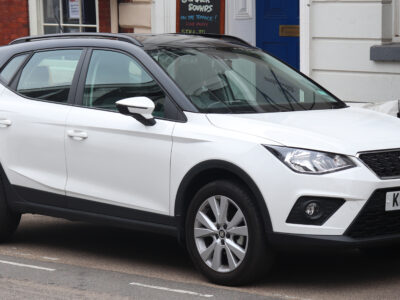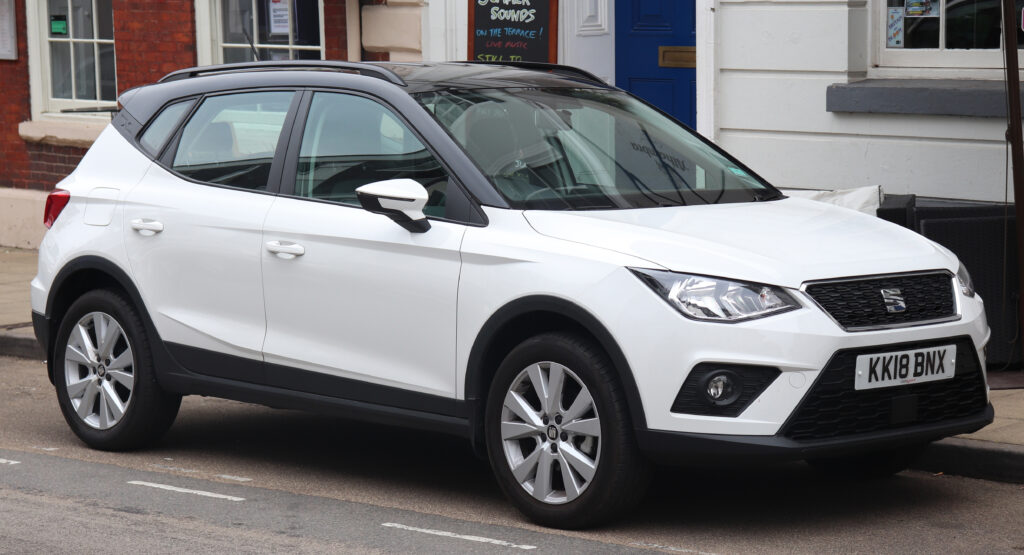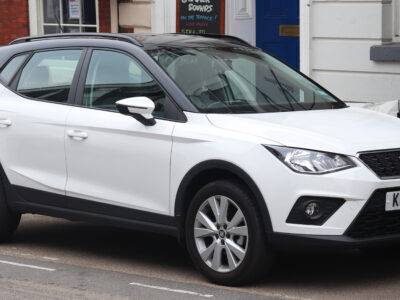
SEAT Arona Reliability Guide: The Complete, Data-Driven Analysis Every Buyer Needs

- Understanding SEAT Arona Reliability Through Real Breakdown Statistics
- SEAT Arona Reliability at a Glance
- Why ADAC Reliability Matters for SEAT Arona Buyers
- Breakdown Trends by Model Year
- Colour-Code Interpretation for Buyers
- Real-World SEAT Arona Owner Feedback
- Known Issues Reported in Ownership History Queries
- Recent SEAT Arona Recalls (All Markets)
- Most Reliable Engine Options for SEAT Arona
- Maintenance Factors That Affect Reliability
- How to Inspect a Used SEAT Arona for Reliability Issues
- SEAT Arona Reliability vs Competitors
- When the SEAT Arona Is the Best Buy
- Conclusion
- FAQs
Understanding SEAT Arona Reliability Through Real Breakdown Statistics
We explore SEAT Arona reliability using verified ADAC breakdown data, recent recall records, and real-world ownership insights. This comprehensive guide distils objective reliability indicators between 2017 and 2023, offering clarity for used-car buyers who want accurate, evidence-based answers.
SEAT Arona Reliability at a Glance
ADAC's breakdown index highlights how often SEAT Arona models required roadside assistance per 1,000 registered vehicles. This results in a measurable, colour-coded rating from dark green (very low breakdown rate) to red (very high rate).
Breakdown Index: SEAT Arona (Calendar Year 2022)
| First Registration (EZ) | Breakdown Index | Reliability Rating |
|---|---|---|
| 2020 | 1.2 | Excellent |
| 2019 | 2.5 | Very Good |
| 2018 | 3.6 | Good |
| 2017 | — | Not Evaluated |
| 2016 → older | — | Not Applicable |
The newer the Arona, the better the reliability trend, with 2020 models performing significantly above average in the small SUV category.
Why ADAC Reliability Matters for SEAT Arona Buyers
The ADAC index excludes non-mechanical incidents such as empty fuel tanks or punctures, ensuring the statistics genuinely reflect mechanical reliability. Only genuine component-related breakdowns contribute to the score, offering an objective foundation for evaluating used Arona models.
Breakdown Trends by Model Year
2020 SEAT Arona – Best in Class
Models registered in 2020 report a breakdown index of just 1.2, placing them in the lowest failure-frequency group.
Typical strong points include:
- Stable electronics
- Reliable engine management systems
- Reduced failure rate across ignition and starting systems
2019 SEAT Arona – Strong Performance
With a 2.5 index, 2019 models remain highly dependable and suitable for buyers seeking long-term value.
2018 SEAT Arona – Holding Steady
Scoring 3.6, early production models show slightly increased breakdown probability, normal for vehicles surpassing 5–6 years.
You may be interested in reading Toyota Corolla AE86 Engine Swap – The Ultimate Guide
Toyota Corolla AE86 Engine Swap – The Ultimate GuideCommon fault patterns include:
- Aging 12V batteries
- Early wear in auxiliary electronics
- Sensor-related issues more common with mileage
Colour-Code Interpretation for Buyers
To simplify.
- Dark Green: Very low breakdown frequency → Ideal choice
- Light Green: Low failure rate → Strong option
- Yellow: Moderate → Acceptable, check service history
- Orange: Higher risk → Inspect carefully
- Red: Very high → Avoid unless fully documented
Most SEAT Arona model years fall within green to light-yellow, meaning the vehicle is generally reliable.
Real-World SEAT Arona Owner Feedback
Beyond statistical reliability, owners highlight strong feedback on:
- Low running costs
- Robust interior build quality
- Durable VW-group mechanical components
- Balanced driving comfort
- Predictable maintenance requirements
Owners report the best experiences with versions equipped with TSI petrol engines, thanks to low fuel consumption and minimal long-term mechanical issues.
Known Issues Reported in Ownership History Queries
When checking individual vehicles, buyers often uncover:
- Mismatched or altered mileage
- Accident history not declared by sellers
- Odometer tampering (common in high-mileage imports)
- Airbag repairs following minor collisions
- Incomplete servicing of DSG transmissions (in dual-clutch variants)
We recommend a complete VIN-based history check before purchase to eliminate these risks.
Recent SEAT Arona Recalls (All Markets)
SEAT Arona Recall – 2021 (Control Unit Software)
- Date: 25/11/2021
- Issue: Instrument cluster software may fail to display visual or audible warnings.
- Risk: Safety-critical alerts (e.g., lane assist, ABS, airbag warnings) may not trigger.
SEAT Arona Recall – 2020 (Seat Belt Buckle)
- Date: 30/06/2020
- Issue: Double seat-belt buckle may be defective.
- Risk: Reduced restraint performance during impact.
SEAT Arona Recall – 2017 (Driver Airbag Deployment)
- Date: 10/08/2019
- Issue: Driver airbag may not inflate adequately.
- Risk: Insufficient protection in collisions.
All recall repairs are free of charge at official SEAT dealerships.
You may be interested in reading Toyota Corolla AE86 Engine Swap – The Ultimate Guide
Toyota Corolla AE86 Engine Swap – The Ultimate Guide Does the Toyota Camry Have CVT Transmission?
Does the Toyota Camry Have CVT Transmission?Most Reliable Engine Options for SEAT Arona
Top Recommended Engines
- 1.0 TSI 95/110
Fuel-efficient, robust, strong ADAC performance. - 1.5 TSI 150
Smooth, refined, higher power with consistent reliability.
Engines with More Attention Required
- 1.6 TDI
Reliable when serviced, but DPF issues may arise with short-distance driving.
Maintenance Factors That Affect Reliability
A well-maintained Arona remains extremely dependable. Key items include:
Service Intervals
- Oil: every 10,000–12,000 miles
- Timing belt (TSI): check by 5 years / 60,000 miles
- DSG gearboxes: oil changes every 40,000 miles
Wear Components Prone to Replacement
- 12V battery at 4–6 years
- Brake pads every 25,000–40,000 miles
- Spark plugs every 4 years
How to Inspect a Used SEAT Arona for Reliability Issues
Checklist for Buyers
- Full service history (dealership or reputable garage)
- Timing belt replacement proof on TSI engines
- Software update verification
- Airbag system check (important for 2017 models)
- VIN check for open recalls
- Exhaust system inspection for early TDI models
SEAT Arona Reliability vs Competitors
Better Than
- Renault Captur (higher breakdown index in comparable years)
- Peugeot 2008 (more frequent electrical issues)
Similar To
- VW T-Cross (shares mechanical platforms)
- Skoda Kamiq
Advantage
The Arona benefits from VW-platform engineering while maintaining lower ownership costs.
When the SEAT Arona Is the Best Buy
Choose it if you want:
- Strong reliability backed by ADAC data
- Low running costs
- A modern interior and strong infotainment
- Safe small SUV performance
- A vehicle suited to urban and long-distance driving
Conclusion
SEAT Arona stands out as a well-engineered, reliable small SUV backed by strong ADAC breakdown data and a manageable recall history. Model years 2019 and 2020 show exceptional reliability, making them standout choices for used-car buyers. With proper maintenance and verified vehicle history, the Arona offers years of dependable, economical, and safe driving.
FAQs
1. Is the SEAT Arona reliable overall?
Yes—ADAC data confirms consistently strong reliability across 2018–2020 models.
2. Which SEAT Arona year is most reliable?
2020 models achieve the lowest breakdown index (1.2), making them the top choice.
3. Are there major common faults?
Only minor issues are commonly reported, such as battery failures or sensor errors. Serious faults are rare.
4. What recalls affect the SEAT Arona?
Key recalls involve software alerts (2021), seat-belt buckles (2020), and driver airbag deployment (2017).
You may be interested in reading Toyota Corolla AE86 Engine Swap – The Ultimate Guide
Toyota Corolla AE86 Engine Swap – The Ultimate Guide Does the Toyota Camry Have CVT Transmission?
Does the Toyota Camry Have CVT Transmission? Toyota Camry Trim Levels 2014: A Detailed Guide to Choosing the Best
Toyota Camry Trim Levels 2014: A Detailed Guide to Choosing the Best5. Are petrol or diesel Arona models more reliable?
Petrol TSI models, especially the 1.0 and 1.5 TSI engines, show the best long-term reliability.
If you want to know other articles similar to SEAT Arona Reliability Guide: The Complete, Data-Driven Analysis Every Buyer Needs you can visit the category Models.
Deja una respuesta






More content of your interest